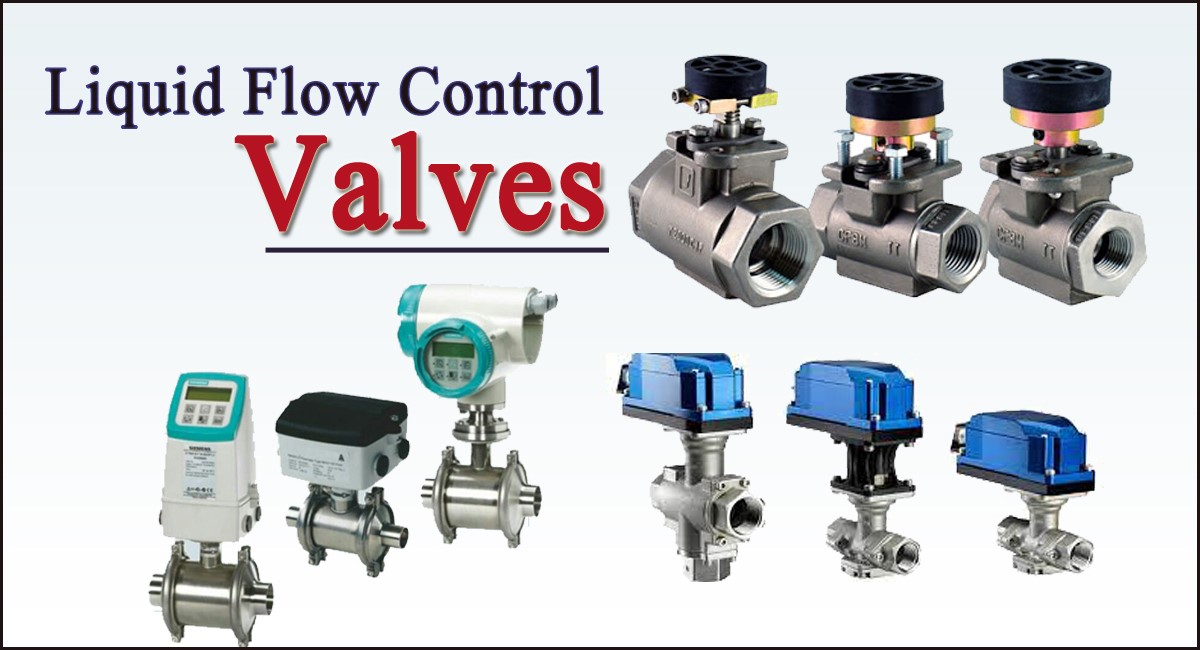Liquid flow control valves are used in various applications to regulate the flow or pressure in a liquid or fluid by responding to signals given by independent devices like temperature gauges and flow meters.
The primary flow control valve has an opening that changes to decrease or increase the flow rate. Below are types of liquid flow control valve which are the best in controlling and measuring the fluid flow rate.
1. Pinch valves
Pinch valves are types of flow control valves used to regulate slurries and liquids’ pressure and flow rate with a significant amount of suspended solids. They are sealed with rubbers and other flexible elements to switch the fluid flow.
The flexibility of the rubber sleeves allows pinch valves to close tightly in substances with solid particles or air. The body of the pinch valve is usually an actuator that removes expensive pneumatic, hydraulic, and electric operations leading to cost-effective results.
2. Gate valves
Gate valves are types of flow control valve which works under a straight line of fluid flow where it switches on and off the non-throttling substances. The user makes the stem rotate clockwise to open or close the motion where there is a downward or upward movement of fluids that makes the stem move.
Gate valves are usually applied in neutral liquids, portable water, wastewater, and other liquids with a temperature variation of negative (-) 20 to 70 degrees Celsius. The gases should be negative (-) 20 to 60 degrees Celsius with a differential pressure of 16 bar and 20 meters per second maximum velocity flow.
Gate valves are categorized into two; wedge-shaped valves and parallel-shaped valves where wedge-shaped contain an inclined gate and two inclined seats, which are less mismatched, while parallel shaped feature a flat gate between two similar seats.
3. Needle valves
Needle valves are types of flow control valves where the volume of a liquid flow is permanently restricted in a small line. The valves have similar features to globe valves, such as the design structure and share pros. The only difference comes when considering the precision of the needle valves.
As the fluid moves through the valve, it makes a right angle flowing through the orifice plate, which is the seat for the rod (a Cone-shaped rod). When you place the cone in the middle, it will change the size of the orifice.
Needle valves can be fine-tuned hence suitable in applications of calibration. You should ensure proper installation to obtain better operational results.
4. Globe valves
Globe valves are common flow control valve types that start, stop, and regulate the liquid flow. They work by initiating a closure through a plug with a bottom convex reduced at the center of the valve into the horizontal seat. Fluid flow is enabled by opening the valve to raise the pin.
A removable disk makes the valve to be ideal for applications of on/off and throttling systems. However, globe valves are unsuitable in applications where pressure drop is the controlling factor since it generates slightly higher pressure drops into the valves.
5. Diaphragm valves
In this type of liquid flow control valve, there is always the formation of a seal when a flexible disc gets into contact with a seat located at the top of the valve body. Diaphragm valve usually responds to pressure and gas a flexibility feature hence can instill force that opens, closes, or monitors the valve.
Diaphragm valves are always super clean, easy to maintain, and have a leak-proof feature making them best suitable for erosive, corrosive, and dirty liquids or fluids. You can also repair the diaphragm body without interfering with the pipeline.
6. Ball valves
It is a type of flow control valve which usually has an excellent shutoff, cheap and durable than other valve types. However, they provide less accurate results due to the need for a high degree of torque to open and close, preventing fine made by the service provider or operator.
7. Butterfly valves
Butterfly valves do not have linear feature since it works using a disk that rotates within the flow area. The valves are less applied in various applications due to their low accuracy level. Their designation feature makes them be limited to few operations.
Conclusion
The liquid flow control valve is essential in various industrial applications. You should choose the best type of control valve depending on your fluid or liquid substance and the type of application it should be employed at.
Author Bio:
Naman Modi is a Professional Blogger, SEO Expert & Guest blogger at proteusind.com, He is an Award-Winning Freelancer & Web Entrepreneur helping new entrepreneur’s launches their first successful online business.
